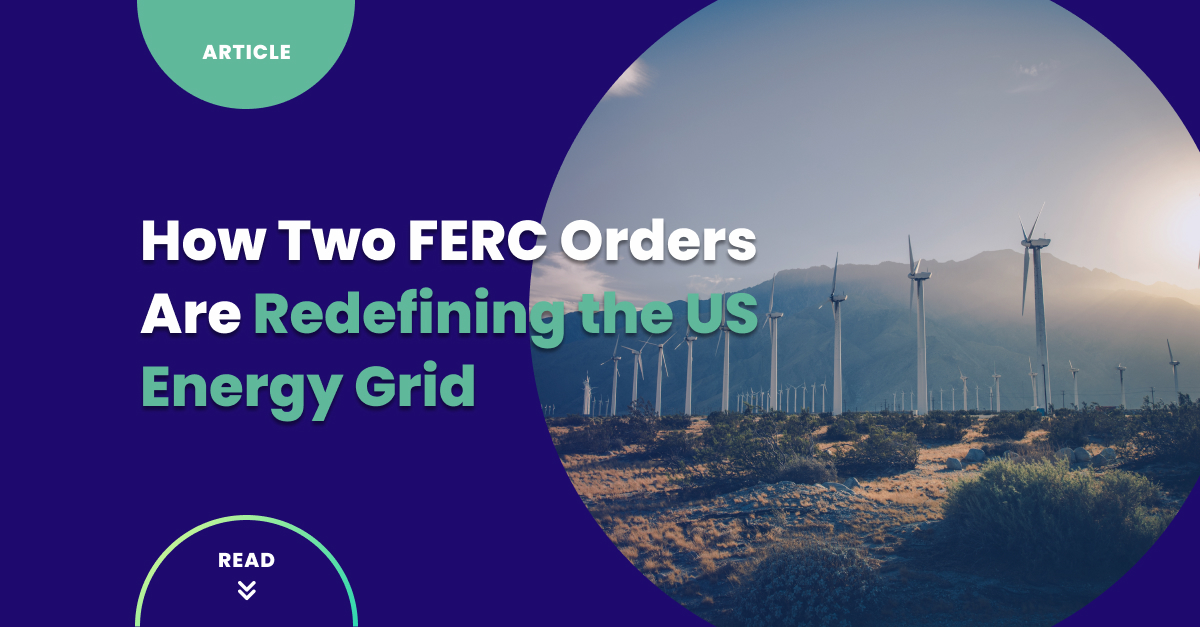How Two FERC Orders Are Redefining the US Energy Grid

The integration of renewable energy and evolving consumer technologies is driving the need for a more diverse and flexible energy infrastructure. As the grid faces increasing demand from new technologies like AI, distributed energy resources, and virtual power plants are becoming essential for supplementing traditional energy resources and ensuring grid stability. The Federal Energy Regulatory Commission (FERC) has issued two landmark orders that are fundamentally changing how these resources can participate in the energy market.
FERC Order No. 841: Opening the Door for Energy Storage
In 2018, FERC issued Order No. 841, a landmark decision that opened the door for electric storage resources to participate in the wholesale markets operated by regional transmission organizations (RTOs) and independent system operators (ISOs). This order directed RTOs and ISOs to establish rules allowing energy storage to provide all market services it is technically capable of delivering. This was a critical step in integrating large-scale batteries and other storage technologies into the grid.
FERC Order No. 2222: Embracing DER Aggregations
Building on the foundation of Order No. 841, FERC Order No. 2222 was approved in 2020 to allow distributed energy resource aggregations to participate in the same RTO and ISO markets. This order allows for the aggregation of small-scale DERs, such as residential solar panels, electric vehicles, and smart thermostats, into a single, cohesive resource. These aggregations, often referred to as virtual power plants (VPPs), can then sell energy, capacity, and ancillary services on the wholesale market. The order provides a clear pathway for these smaller, more flexible resources to contribute to grid stability and reliability.
The Unique Case of ERCOT
It’s important to note that FERC’s jurisdiction does not extend to the Electric Reliability Council of Texas (ERCOT). ERCOT operates within the Texas Interconnection, an independent electricity grid not connected to the interstate system. While not subject to FERC’s orders, Texas is still a major player in the VPP and DER space, with ongoing pilot projects and state-level legislation driving participation in demand response programs.
Varied Implementation Timelines
The implementation of FERC Orders 841 and 2222 varies significantly by RTO and ISO. Some regions have already fully implemented the new rules, while others have compliance filings and implementation dates planned for as late as 2026 or 2027. This staggered timeline means that opportunities for DER and VPP market participation are emerging at different rates across the country, making it crucial for companies and stakeholders to track regulatory developments at both the federal and state levels.